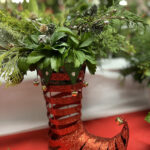Getting Started – Tip Sheet
Welcome to the Framingham Garden Club’s Community Giving Garden project! Here are a few Gardening How-To’s and Tips to help you get started. Check our website frequently for additional resources and information https://framinghamgardenclub.org/resources-information/
How to Start
As a new gardener your first question may be – how do I start? We are providing you with some items to help you get started – a starter kit – and then some tips on how you can grow even more.
For the first 50 families that have registered for the Community Giving Garden, the starter kit contains:
- A seedling, which is a very young plant grown from seed.
Starting from Seeds – Tip Sheet
You can sow seeds outdoors in a grow bag, a container with drainage, or prepared ground.
- Some seeds (for cool weather plants) can be started right away. They germinate at lower temperatures of 45 to 55 degrees F. Others need to wait until after the last frost date, which in our area is roughly May 11.
- How to know? Every seed packet has instructions on how many seeds to plant, how to space your seeds, when to plant your seeds, estimated germination time, and amount of sunlight. Read and follow this important information!
- It is particularly important to read whether your seeds need some sort of preparation before planting.
Planting from Seedlings – Tip Sheet
Seedling care before planting
- Keep your seedlings watered. Check daily. Water when the soil is dry when you stick your finger in it or if the seedling starts to droop.
- Cool weather seedlings like lettuce or mustard greens can be transplanted in April.
- If you have a tomato or pepper seedling, wait until mid-May to plant. Keep it indoors in a sunny protected spot.
- Plan to transplant seedlings to an outdoor garden or container between May 11-15. A week before, start to “harden off” your seedling, that is, gradually adjust them to the outdoors by slowly acclimating them to direct sunlight, wind, rain, and temperature fluctuations.
Preparing Your Soil – Tip Sheet
Grow bags and outdoor containers
Simply pour or scoop fresh potting soil into your container and level off the top. Fill to about ¾ to the top of the container. Do not use soil from your yard or commercially sold topsoil and garden soil.
Tip: fresh potting soil is recommended for beginners, but you can reuse potting soil from last season if you dry it, clean it of all debris, add compost and a slow-release fertilizer or worm castings.
Preparing soil for outdoor gardens
- If starting with raised beds or previous garden beds, remove all weeds, rocks, and sticks from your garden area.
Caring for Your Garden – Tip Sheet
Mulching
- Mulch is an option around your seedlings to conserve moisture and deter weeds. Use straw, grass clippings, or shredded leaves for easy organic mulch. You can find additional information on mulching a vegetable garden at https://getbusygardening.com/mulching-vegetable-garden/
Watering
- Water immediately after transplanting your seedlings, and for seeds water whenever necessary to keep them moist. To avoid washing away your seeds, use a fine spray.
- Remember that plants in grow bags and containers require more water than in-ground plants.
- Seeds and seedlings generally need water every 1 to 2 days. They grow best with a consistent and even supply of moisture where the soil is neither soggy nor dry.
Animal and Pest Control – Tip Sheet
While gardening is rewarding, the truth is that it takes some care to prevent our efforts from being foiled by wildlife. So what to do to protect your vegetable garden from deer, rabbits, chipmunks, and the like?
- One advantage of grow bags and container grown plants is that they can be placed close to the home where critters are less likely to roam.
- Fencing is the most effective way to keep unwanted visitors out of your garden.
- Raised beds that are two feet or taller also can limit rabbit damage, especially if you add a short fence on top.
- A short fence will work for most rabbits, squirrels, and chipmunks, but should be buried at least 10″ deep to deter persistent diggers.





